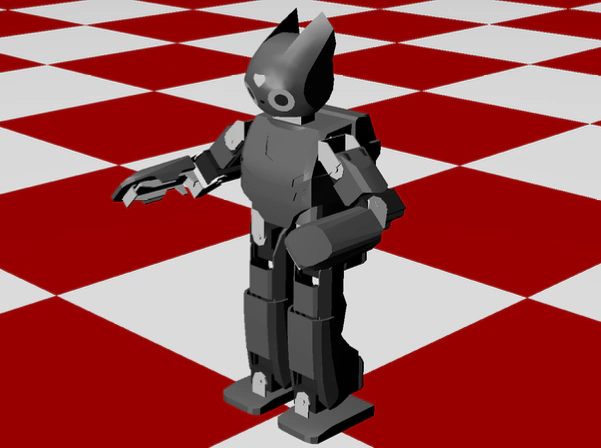Evolving Locomotion for a Humanoid Robot

Abstract
The purpose of this bachelor work was the evolution of artificial neural networks to develop locomotion for the DARwIn-OP robot. The DARwIn-OP, henceforth referredtoasDarwin, isa45cmtallhumanoidrobotwhichisused, amongstothers, in the RoboCup for robot soccer. The main problem in robot soccer is creating a robust and fast locomotion. Since a humanoid robot is a very complex system, it is difficult to handcraft a robust walking algorithm. Furthermore, it needs to be adjusted by hand if the floor or the weight distribution of the robot itself is changed. One approach to automatically developing a walking algorithm is based on biological evolution, by which a gradual improvement of individual solutions can be achieved over many generations. Its parallel nature and pragmatic approach to solve problems makes artificial evolution a well suited solution for this task. But evolution too has certain difficulties which must be overcome. For example, tens of thousands of experiments need to be performed in order to find a good solution in a complex search space. In this work, a system was developed, which exploits the concurrency offered by evolution and performs the experiments in the Webots simulator on several computers in parallel, thereby finding solutions in a reasonable amount of time. It used an accurate replica model of the Darwin to evaluate the solutions, which makes the transfer of a suitable solution to the real Darwin robot realistic. This work focuses on the oscillating pattern generation within the artificial neural network (ANN) and by external sources, as well as the impact of neurons in the hidden layer of the ANN. The experiments have shown that an ANN is able to generate a pattern without the use of a central pattern generator. Furthermore the results indicate that at least four neurons in the hidden layer have to be present for a locomotion to evolve.
Type
Publication
Zenodo
Evolving Locomotion for a Humanoid Robot is a bachelor’s thesis that presents an automated evolutionary framework for generating walking gaits on the DARwIn-OP platform. By encoding continuous-time recurrent neural networks (CTRNNs) as genotypes and leveraging a distributed Webots simulation infrastructure, the work explores oscillatory pattern generation, sensorimotor feedback integration, and the minimal hidden-layer requirements, demonstrating that at least four hidden neurons are essential for stable bipedal locomotion. The resulting system efficiently parallelizes tens of thousands of trials to evolve robust, transferable walking behaviors without manual tuning of control parameters.
Authors
Heye Vöcking
Senior Data Engineer
Data & Knowledge Engineer with 10+ years of professional experience transforming petabyte-scale data into knowledge. Currently stress-testing large-language-model alignment, developing jailbreaks, and building real-time knowledge-graph systems. Interests include ML security, physics, Austrian economics, and Bitcoin.